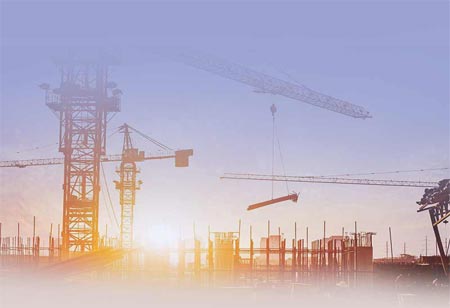Thank you for Subscribing to Construction Business Review Weekly Brief
Specials
- Apartment and Condominium Contractors Canada
- Decking Canada
- Architectural Glass Europe
- MEP APAC
- Construction Saudi Arabia
- German Apartment and Condominium Contractors
- Construction Law APAC
- Outdoor Construction
- Foundation Construction Canada
- MEP Canada
- Kitchen and Bath
- Cold Storage Construction APAC
- Precast Concrete Europe
- Construction Staffing Europe
- Pre-Construction Services
- Flooring System APAC
- Scaffolding Canada
- Swimming Pool Construction Canada
- Construction Management Canada
- Cold Storage Construction Canada
- Flooring Systems Europe
- Residential Construction
- Concrete Canada
- Construction Cladding Europe
- Construction Cladding APAC
- Concretes, Aggregates and Construction Materials APAC
- Concretes, Aggregates and Construction Materials Europe
- Commercial Contractors Europe
- Commercial Contractors APAC
- Dummy
- Construction Insulation, Coating and Waterproofing
- Construction Management APAC
- Landscaping Canada
- Construction Coating Europe
- Construction Tech Startups Europe
- Insulation Services Europe
- Mechanical Contractor Canada
- Mould Remediation and Testing Europe
- Swimming Pool Construction APAC
- Building Sealing Solutions Europe
- Construction Engineering Services
- Mechanical Electrical and Plumbing
- Roofing Systems Europe
- Architectural Glass APAC
- Startups APAC
- Construction Forensic and Owners Representative
- Flooring System
- Waterproofing APAC
- Wall Systems
- Safety and Compliance Europe
- Construction Equipment
- Modular and Prefab Construction
- Architectural Glass
- Construction MENA
- Construction Demolition and Recycling Europe
- Modular Construction Europe
- Construction Interiors
- Steel Building APAC
- HVAC
- Doors and windows
- Modular Construction APAC
- Building Information Modeling APAC
- Sustainable Construction APAC
- Building Restoration and Maintenance
- Commercial Contractors
- Specialty Construction
- Construction Engineering Canada
- Construction Engineering MENA
- Modular Construction Canada
- Construction Demolition Canada
- Roofing and Siding Systems
- Construction Latam
- Construction Staffing
- Roofing Systems APAC
- Construction Consulting
- Steel Building Europe
- Construction Demolition and Recycling APAC
- Safety and Compliance APAC
- Concretes, Aggregates and Construction Materials
- Construction Cladding
The Power of Collaboration in Glass Architecture
Glass has evolved into a pervasive element within contemporary architecture. Its versatility in shaping light and space has inspired innovative designs, ranging from sleek facades to expansive windows.

By
Construction Business Review | Monday, June 10, 2024
Stay ahead of the industry with exclusive feature stories on the top companies, expert insights and the latest news delivered straight to your inbox. Subscribe today.
Glass, a crucial element in modern architecture, necessitates collaboration among architects, manufacturers, and construction teams, leveraging digitalization, sustainability, and innovative technologies for successful execution.
FREMONT, CA: Glass has evolved into a pervasive element within contemporary architecture. Its versatility in shaping light and space has inspired innovative designs, ranging from sleek facades to expansive windows. However, realizing architectural visions through glass installations necessitates meticulous coordination among architects, manufacturers, and construction teams. This intricate collaboration, supported by a seamlessly integrated supply chain, is paramount to the successful execution of projects that boast both aesthetic allure and functional integrity.
The Power of Collaboration
In the collaborative process of architectural design and glass manufacturing, architects conceptualize innovative possibilities and translating these visions into tangible glass solutions necessitates the specialized knowledge of manufacturers. Effective communication and collaboration are paramount to ensuring that the selected glass aligns with the design intent while meeting technical feasibility and budgetary constraints.
Synergy and Innovation thrive through collaborative brainstorming sessions involving architects, manufacturers, and construction teams. This collective approach fosters the exploration of new glass technologies, textures, and finishes, leading to groundbreaking designs that challenge conventional boundaries and elevate the potential of architectural glass solutions.
The early and continuous dialogue among all stakeholders is crucial in risk mitigation. Proactive problem-solving becomes possible by identifying and addressing potential installation, fabrication, or material compatibility challenges during the initial stages. This proactive approach ensures that any issues are resolved before they can impact the project timeline or budget, contributing to the overall success of the architectural endeavor.
The Symphony of Integration
Effective Streamlining of Processes: Implementing a well-integrated supply chain is pivotal in establishing a smooth and efficient information flow across all stakeholders. Real-time sharing of data about design specifications, material availability, and production schedules is crucial in mitigating delays and ensuring a unified understanding among all parties.





